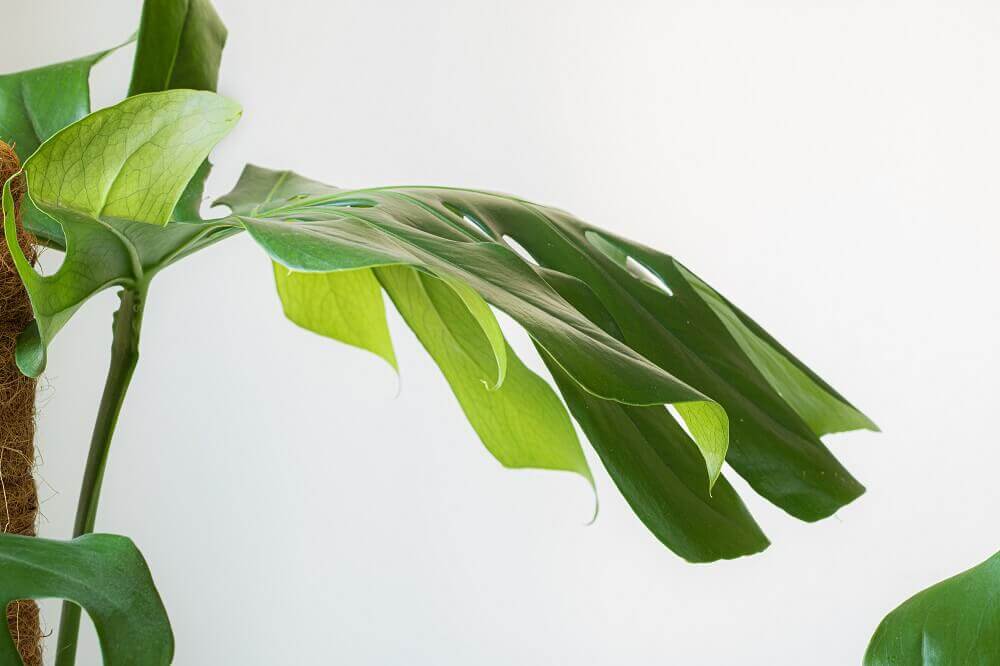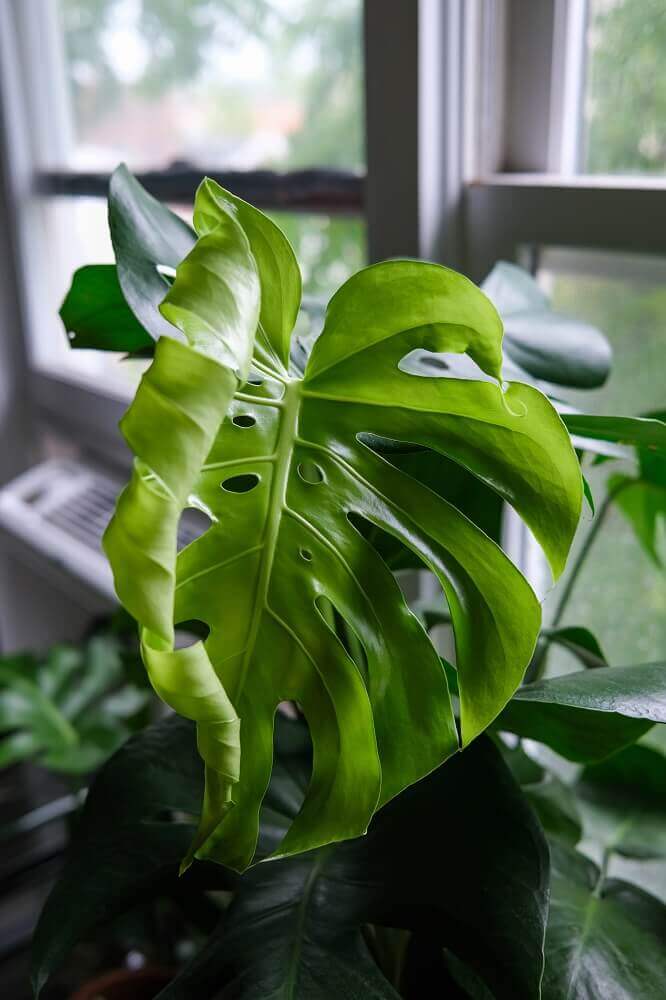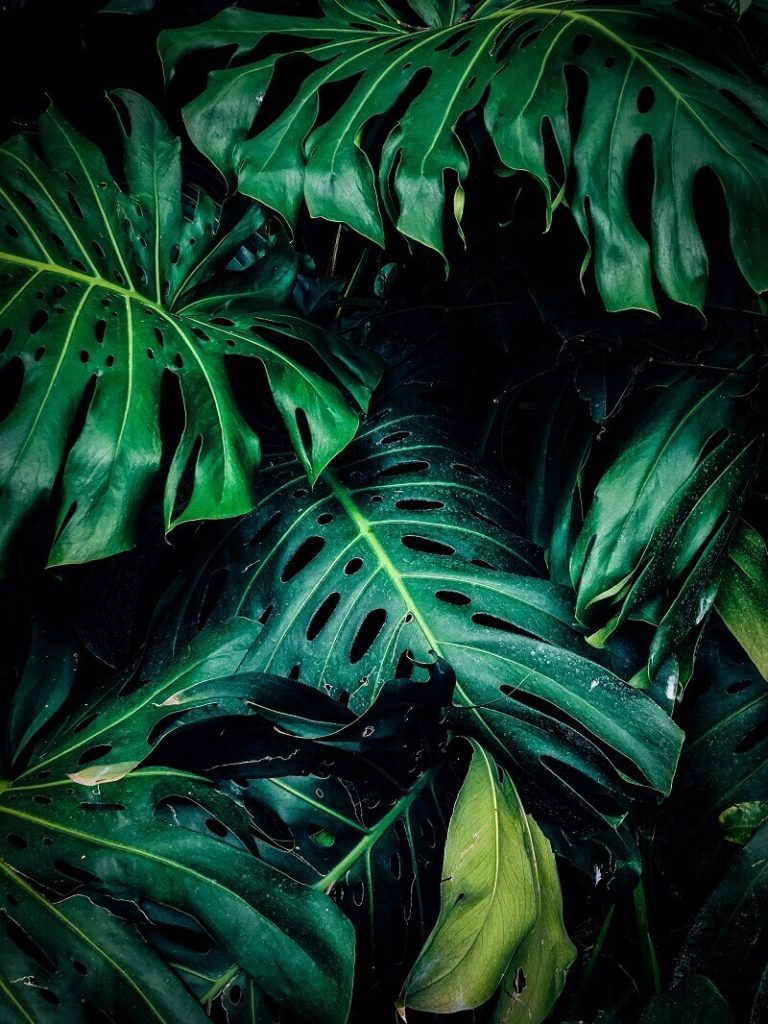
Monstera Deliciosa or the Swiss Cheese Plant is an evergreen tropical vine. The plant is mostly popular for its shiny leaves with holes that often conjure the image of Swiss cheese. Images of this tropical delight can be found across millions of social media posts describing home decor. For many, its presence elevates home decor and create an ambience of peace and happiness.
Even though Monstera Deliciosa is a low tree it often reacts to too much water loss. Curling leaves is one of the common problems in Monstera Deliciosa and if you have encountered such a problem, you can assume that your plant is under stress.
Water loss is the key reason why the leaves of Monstera Deliciosa often get curled. When the plant does not get the level of water it requires to survive, it starts curling its leaves to have the minimum surface area and low transpiration. Like many other indoor plants, Monsteras take this adaptive measure to survive in unfavourable conditions.
However, you can fix this problem easily by addressing the issues causing water loss. Here, we will discuss the causes and solutions of curling leaves in Monstera Deliciosa plants.
Table of Contents
Identify Curling Leaves in Monstera Deliciosa Plants

Identifying the signs of damage is an important task. If you want to see your plant healthy and happy, you have to learn to recognize issues. However, you do not have to be an expert to identify signs, as you can easily encounter them on the leaves. Curling leaves is one of the issues with your Monstera Deliciosa that you should not ignore.
Although thirst and dryness are considered as the key reason behind the curling leaves problem pouring a lot of water on the plant may not be the only solution. Hence, it is very important to identify the disturbing factors and recognize the actual culprit. Have a look at some of the most common reasons why the leaves of your Monstera Deliciosa are getting curled and dried out.
Causes and Solutions for Leaves Curling in Monstera Deliciosa Plants
Leaves of Monstera Deliciosa can curl up due to causes like under or overwatering. However, other factors like heat, low humidity, polluted water, over-fertilization, low light etc. can also cause leaves curling issues.
-
Inadequate Watering:
This is one of the key reasons why the leaves of your Monstera plant get curled. When a tropical indoor plant like Monstera Deliciosa does not get enough water to carry out its physiological process, it reacts by curling its leaves. Now the question is that how would you know your plant needs more water.
The first measure you can take to identify the watering issue is by checking out the potting soil. If the topsoil of the pot is dry, inspect the leaves. Inadequate watering can also cause issues like brown leaves, brittle leaf edges, etc.
Solution:
To keep your Monstera plant healthy, you need to hydrate it frequently. If you find the leaves curled and the soil dried out, you need to hydrate the plant immediately. To do this, you have to drench the soil with water and wait until the water drains out completely.
It is better to follow a routine to inspect the condition of your plant and assess if it requires a drink. Try to pour water slowly and make sure you add water to the soil directly. In some cases, people tend to bathe the entire plant with water. This is not a good practice.
To find out if your Monstera plant is thirsty, push a wooden stick or your finger nearly two inches into the soil. If you find it dry, your plant needs to be hydrated. On the other hand, if you find it damp, you can wait for a few days.
-
Over Watering:
Stagnate water across the topsoil can also cause problems. To keep a Monstera Deliciosa plant healthy, you have to water it once or twice a week. But, if you find the soil damp even 4-5 days after watering, it means your plant is getting more water than its need.
Overwatering stops oxygen supply to the root system and that leads to suffocation of the roots. In such a condition, the plant fails to extract nutrients and much-needed oxygen from the soil. The condition can also lead to leaves curling problems. Also, stagnant water can make your pot an ideal breeding ground for harmful fungi and weeds.
Solution:
Like inadequate watering, overwatering can also kill your plant. Hence, make sure you are watering the plant only when it needs. You can use your finger to check the moisture level in the soil. You can follow an alternate drying method to hydrate the plant.
Before you apply water to your plant, make sure the drainage holes are clear and are working perfectly. To loosen the soil and improve the drainage system, you can add sand mulch, perlite or compost. Remember, hard soil makes drainage difficult; hence prepare the soil accordingly.’
[ Related: What Is The Best Soil For Monstera Deliciosa? ]
-
Heat Stress:
Unbearably high room temperature can also trigger leaves curling problems in Monstera Deliciosa. Indoor plants like Monstera cannot survive in extreme temperatures and the curling of leaves could be a reaction to the same. If you keep the plant close to your heating system or under the scorching sun, its leaves start losing moisture quickly. In such a condition, the plant curls its leaves to save some moisture.
Seasonal changes can also cause heat stress and you may find your Monstera reacting negatively to temperature variations.
Solution:
Temperature or heat stress can kill the adorable plant if you do not take measures to save it on time. If you place the pot close to your heating system in winter, excessive heat can make the plant dry. Hence, make sure the room temperature is favourable to the plant. Try to keep the room temperature between 18°C-30°C (65°F-85°F). Like high temperatures, the plant can get damaged at extremely low temperatures. The room temperature should not drop below 15°C (60°F).
Also, never place the plant under direct sunlight especially in summer, as direct sunlight can burn the leaves of your plant. Also, try to avoid placing the plant near a window in the middle of summer, as heat waves can harm your plant and cause curly leaves.
[ Related: How Much Light Does A Monstera Plant Need? ]

-
Low Humidity:
Low humidity is another reason that can trigger leaves curling issues. Monstera Deliciosa is a tropical plant and it can survive on average humidity. The plant, however, cannot withstand dry weather and often reacts with curled leaves. In a low-humid condition, the plant finds it difficult to run the transpiration process and it loses water and moisture rapidly. Symptoms caused by under-watering and low humidity are identical.
People, who live in fairly humid areas can also encounter leaves curling problems in their Monstera plants. Indoor climate control systems like air conditioners, heaters, fireplaces, etc. can make the air inside a room dry. If you suspect these factors are killing your Monstera, place the plant elsewhere.
Solution:
To solve issues related to humidity, you need to know the humidity level of your room. Although local weather forecasts can be a reliable source to collect information on the humidity of your area, you need to be aware of room humidity also.
You can use a hygrometer to check the humidity level of your room. Anything between 40% and 60% would be fine for your Monstera Deliciosa plant. If the humidity level is below average, take measures to save the plant. You can spend money on a humidifier for instant results or apply effective DIY methods to fix the problem. You can bring some pebbles on a tray and soak them in water. After that, place the Monstera plant on top of the tray to improve the condition.
-
Contaminated Tap Water:
So you thought using tap water for your Monstera plant is safe? It might not really be. Polluted tap water can make your plant unhealthy and lead to problems such as curly leaves. Tap water contains chemicals such as fluoride and chlorine to make water germ free. Therefore, frequent application of tap water on Monstera can kill helpful microbes present within the soil.
Microbes and bacteria living within the soil are good for your Monstera plant. These microbes play a major role in the process of decomposing organic materials. The process makes it easier for the roots to absorb nutrients from the soil.
If you continue to use tap water for your Monstera plant, its root system can get damaged. Once its physiological function gets disrupted, you can witness issues like curling leaves.
Solution:
Contaminated soil can be very dangerous for your Monstera plant. If the soil in the pot is accumulated with harmful chemicals, take steps to replace the soil with new high-quality drainage capacity soil.
It is better to trim off the damaged parts of the plant before you apply fresh or filtered water to the plant. Rain and snow-melted water can be a good option but if you still prefer easily available tap water, make sure it is free of chemicals.
-
Over Fertilization:
Overfertilization can invite serious problems, especially when you are using a small container to grow your Monstera Deliciosa plant. We often follow the instructions related to fertilizer doses mentioned on the packages, but sometimes it can be wrong. The fertilizer company can recommend more than what your adorable plant requires to thrive.
The need for fertilization varies from one season to another. In winter, for example, your plant will require no fertilization. Remember, if you apply fertilizer even when your plant does not require it to survive, the consequence can be fatal. Overfertilization can burn the roots of your Monstera plant and this will lead to symptoms like curling leaves.
Solution:
To find out if your plant is suffering from over-fertilization, you will have to perform some tests. However, there is no need to knock on a lab door, as you can check it on your own. If your plant gets overdosed, you will find some crusty build-up on top of the soil or the edges of the pot.
On encountering such signs, you should immediately stop fertilizing your plant. Bring fresh soil and repot the plant to give it a new lease of life. Remember, under fertilization is better than over fertilization; hence, be careful when fertilizing your Monstera Deliciosa plant.
-
Pest Infestation:
Pest infestations can cause moisture reduction and subsequently curling leaves. Plants like Monstera Deliciosa often get infected with unwanted pests like spiders, mites, mealybugs or thrips. Once infected with these types of pests, your plant starts losing essential water from its leaves.
Even if you water your plant frequently, you may find the leaves curling or drying out. Pests extract plant juices and feed on them. Water gets extracted before it makes its way to the leaves.
Solution:
Before you think about applying pesticides to your Monstera plant, identify the pests first. Most of the pests reside around the stem joints and under the leaves. Hence, you need to inspect all possible areas to find the culprits. Yellow ring signs on the leaves are also a symptom of pest infestation.
It is quite easier to eliminate pests from the plant. Inspect the plant regularly and if you find infestations, separate the infected plant from other plants. Using pesticides can be an easy solution but make sure the product is made for small indoor plants such as Monstera Deliciosa.
Conclusion
Curling of leaves is a major sign of damage or serious illness in Monstera deliciosa and you should not ignore it at any cost. Since various factors are responsible for the curling of leaves in Monstera, it is highly important to identify and recognize the root cause. Even though dryness is the most common reason behind the curly leaves of Monsteras, accurate diagnosis can help you to apply the right cure. In this article, we have highlighted some of the most common reasons behind curled leaves in Monstera deliciosa and included their solutions to make it convenient for the readers. We hope the information we have shared will help you save your favourite plant. If you have more ideas to share, please share them with us.
Reference List

Gardening is my greatest passion, and I love indoor and outdoor plants so much. Plants make me happy, and I enjoy taking care of them. I know keeping plants happy and healthy is a challenging task. But as a plant enthusiast, I do my best to help my little friends thrive. I am here to help people who nurture similar points of view about plants with my little knowledge and experience.
